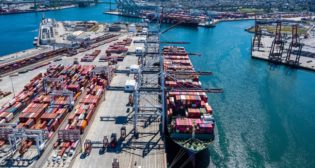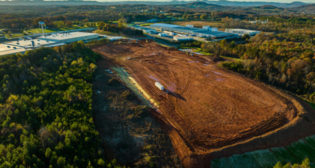
Rebuild, Renew, Repower
Written by William C. Vantuono, Editor-in-Chief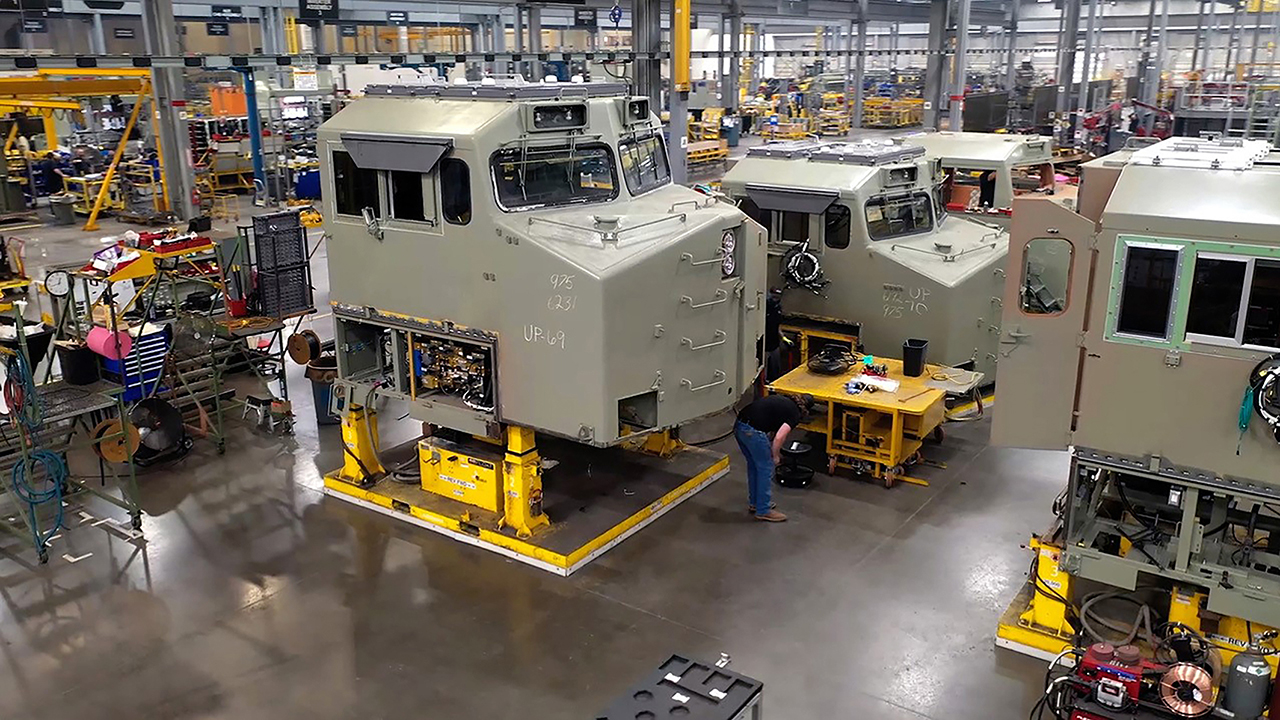
Work is under way at several Wabtec plants, Fort Worth, Tex. (pictured) among them, to modernize 600 Union Pacific locomotives. Wabtec photo
RAILWAY AGE, SEPTEMBER 2022 ISSUE: For many freight railroads, upgrading their existing locomotive fleets to current standards of improved fuel efficiency and emissions reductions is far more cost-effective than acquiring new power. Technology—AC traction, Tier 3 or 4 prime-movers, updated control systems, real-time health monitoring—makes it all possible.
OEMs like Wabtec and Progress Rail (EMD/Caterpillar) now identify rebuilding locomotives to better-than-new status as their primary line of business. Companies such as NRE, Knoxville Locomotive Works, Brookville Equipment, Cummins and Railserve LEAF also supply this market. And Class I railroad Norfolk Southern (NS), sometimes working in concert with Wabtec or Progress Rail but often independently, rebuilds and repowers locomotives through its TMS (Thoroughbred Mechanical Services) division, located in Altoona, Pa., in the facilities of the former Pennsylvania Railroad’s legendary Juniata Locomotive Works.
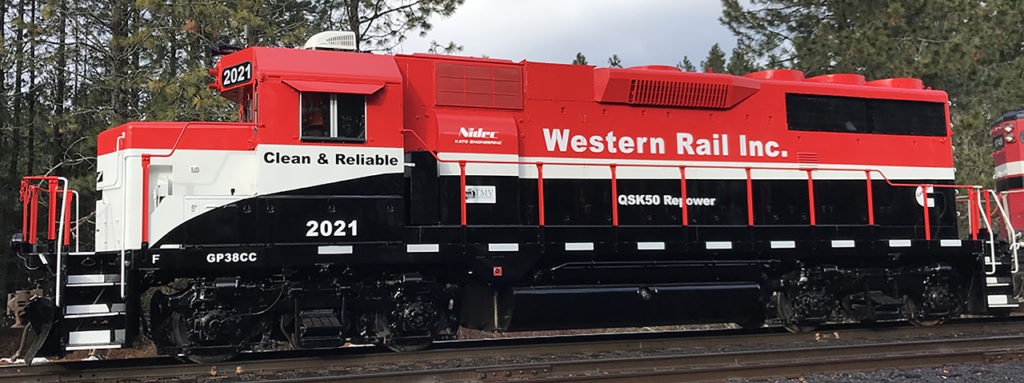
This GP38CC switcher is EPA Tier 3-certified and delivers 2,130 hp at 1800 rpm. Its Cummins QSK50 Tier 3 Power Module is designed for ease of installation into multiple locomotive models. Cummins pre-built the entire unit, including the engine, alternator, airintake, exhaust and air compressor drive, on a base skid. New cooling cores were installed in the existing cooling hatch. The Power Module is equipped with a Kato dual-bearing traction alternator rated at 1600 kW of traction power and 288 kW of 120v/3-phase companion power. If required, the alternator can be configured to meet the needs of a specific locomotive application.Cummins photo
Locomotives are a little like classic cars. Take good care of them, and they’ll last many years, decades, even. But at some point, they will need to be rebuilt, if they are to continue in regular service. “Restored” is not the correct term here, because restoration is meant for locomotives designated for occasional service on special excursions, or static display as cosmetically accurate museum pieces. “Resto-mod” is a more accurate analogy. For a classic car, it could be a 1969 Pontiac GTO rebuilt with a modern LS-series V-8, electronic fuel injection, disc brakes, rack and pinion steering, five- or six-speed Tremec transmission with overdrive, Hotchkis suspension, electric radiator fans, 17-inch wheels, etc., etc.—something that’s better than as-built new, looks fabulous and can be driven anywhere without worry.
For diesel-electric locomotives, resto-mods are best exemplified by what railroads like Union Pacific (UP), NS and Canadian Pacific are doing, in place of investing in new power that can cost upward of $3 million each. For roughly half that investment, they can obtain rebuilt, upgraded units that deliver reliability, fuel efficiency, environmental benefits and longevity.
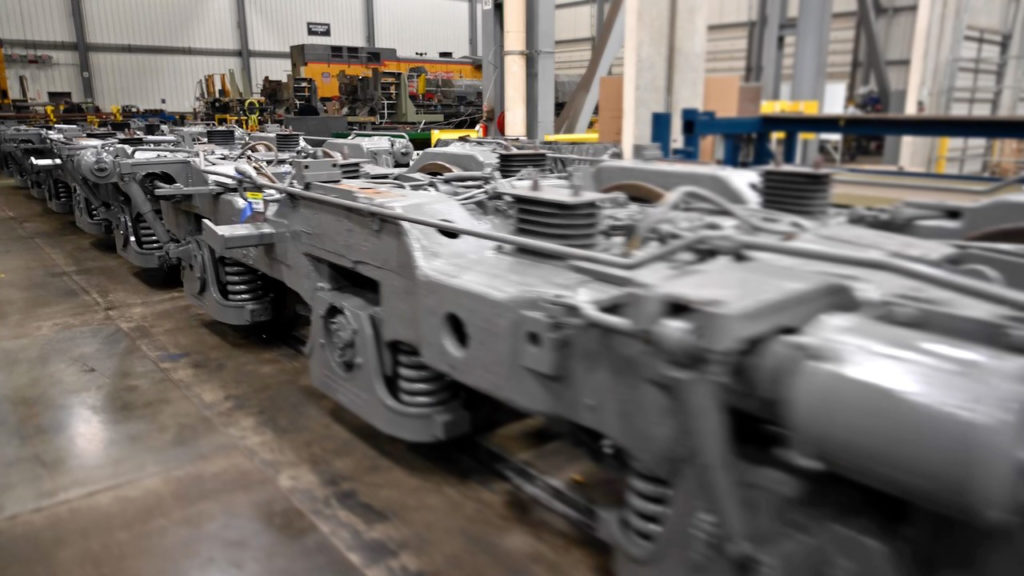
UP in late July selected Wabtec to modernize 600 locomotives in a deal worth more than $1 billion. This is Wabtec’s third major power-upgrade order from UP since 2018, covering more than 1,030 locomotives upon completion in 2025.
Wabtec will upgrade 525 of UP’s AC4400 and AC6000s, as well as 75 Dash-9s in what it called “the largest investment in modernized locomotives in rail industry history.” They will feature the FDL Advantage engine upgrade and Modular Control Architecture, a next-generation controls technology that is said to be applicable throughout Wabtec’s locomotive installed base. The modernizations will not only extend locomotive life, but also provide such benefits as a fuel efficiency improvement of up to 18%; a more-than 80% increase in reliability; and a haulage ability increase of more than 55%, according to Wabtec. In addition, Wabtec said, each upgraded unit will eliminate approximately 350 tons of carbon per year, and UP will realize approximately 210,000 tons in annual emission reductions from the total modernization.
The work will take place at Wabtec’s U.S. plants, with deliveries expected to begin in 2023. The manufacturer said 70,000 tons of steel would be reused and recycled, “which is the equivalent of more than 51,000 passenger cars.”
For Wabtec, the order is a bonanza. “We estimate that the agreement with UP could mean $360 million of revenue per year for Wabtec for the next three years,” said Cowen and Company Transportation Analyst Matt Elkott. “At least 60% of that could be incremental to expectations, resulting in incremental annual revenues of at least $216 million for 2023-2025 and annual incremental EPS accretion percentage in the high single digits to low teens. We note that modernizations are about half the revenue of a new locomotive for Wabtec, but at much higher margins. As the North American new-build market is likely to continue to be anemic, we expect modifications strength to continue, with more Class I’s possibly signing new agreements. Wabtec is the largest freight locomotive builder, followed by Caterpillar (Progress Rail/EMD). The two form an effective duopoly in North America.”
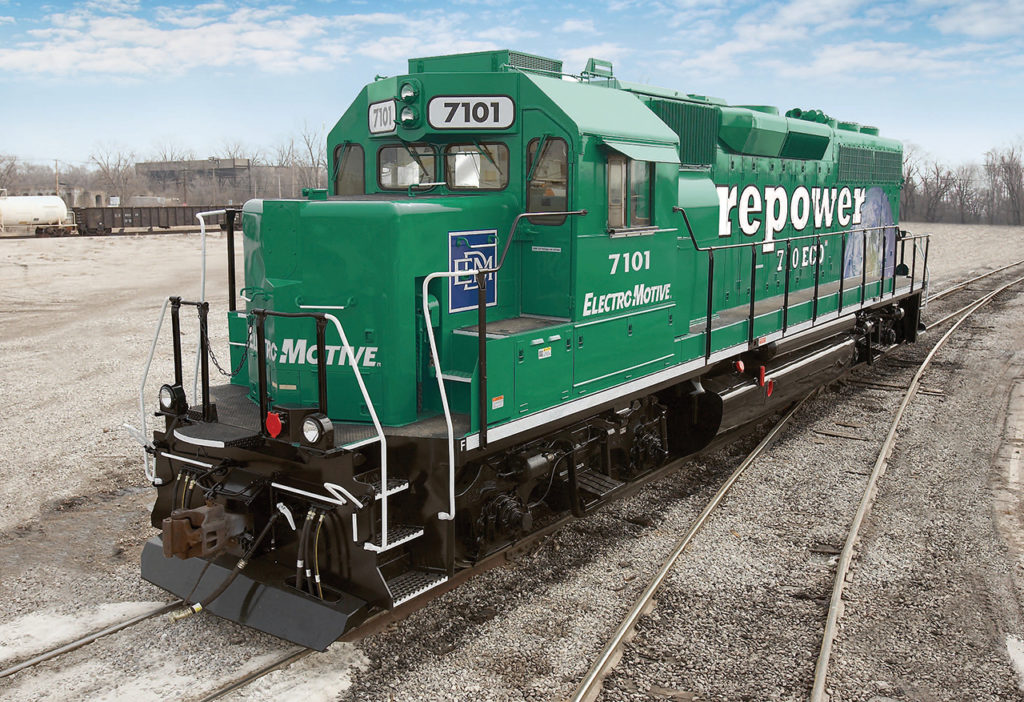
The EMD® 710ECO™ Repower locomotive series is equipped with an EM2000™ Microprocessor Control System and an 8- or 12-cylinder EMD® 710 prime-mover. EMD photo
Like Wabtec, Progress Rail has entered the repower market full-force, offering four units: the EMD® 24B Repower T-4, 30C, 20B, and 710ECO™. They all “can be tailored for customer installation,” or delivered as “complete, turnkey solutions, using the latest generation of EMD® or Cat® engines and a choice of control systems.”
Progress Rail describes the 24B as “an EMD® GP-style locomotive powered by a Cat® 3512C HD 12-cylinder engine and Kato alternator. Designed with flexibility in mind, this unit allows customers to choose options without extensive engineering. It utilizes rebuilt GP-style trucks with rebuilt D78 traction motors and has been constructed with a new crashworthy underframe, cab and fuel tank.” SCR and DPF exhaust aftertreatment provide Tier 4 emisions compliance.
The six-axle 30C features a 3,005-hp Cat® 3516C-HD 16-cylinder engine and rebuilt D77 traction motors. Built on an EPA Tier 2 emissions basis, optional exhaust aftertreatment bumps up compliance to Tier 3, with Tier 4 NOx. Progress Rail claims 5%-15%-plus fuel savings vs. comparable originally equipped locomotives. The four-axle 20B, like the 24B, is a GP-style locomotive. It’s equipped with a Cat® 3512C HD engine, Kato alternator, rebuilt D78 traction motor, and EM2000™ including AESS™ (Automatic Engine Start Stop). It’s rated at 2,100 hp.
The 710ECO™ Repowers “extend locomotive life for up to 40 years and lower life cycle costs by equipping older models with EMD® 710 engines,” Progress Rail notes. Available with Tier 3-compliant 8-710G3A-T3 (8-cylinder) or 12-710G3A-T3 (12-cylinder) engines, they feature a separate loop aftercooling system, EM2000™ Microprocessor Control System and AESS™.
CRISI GRANTS POWER REBUILDS
The Federal Railroad Administration CRISI (Consolidated Rail Infrastructure & Safety Improvements) Grant Program has much wider applicability than infrastructure projects. Among several new eligible project categories is “rehabilitating, remanufacturing, procuring, or overhauling locomotives,
provided that such activities result in a significant reduction of emissions.” Eligible applicants now include “States, a group of States, an Interstate Compact, a public agency or publicly chartered authority established by one or more States, a political subdivision of a State, Amtrak and other rail carriers providing intercity rail passenger transportation, Class II/III railroads and associations that represent a Class II/III railroads (new), and rail carriers and equipment manufacturers, in partnership with at least one of these entities.” For short lines, regionals and S&T (switching and terminal) railroads, expanded CRISI availability means that modern motive power is not out of reach.

